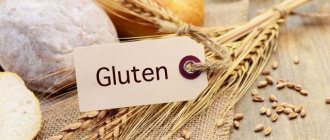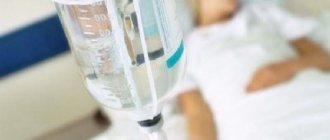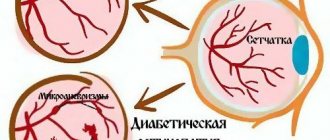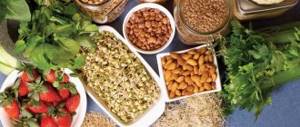Nutrition for diabetes, so that sugar does not rise, implies table No. 9, which is recommended in combination with physical activity, taking medications and other methods of conservative therapy.
Diet number 9 for diabetes mellitus helps improve the functionality of the pancreas, ensures the normalization of metabolic processes, which together leads to stabilization of glucose levels at the required level.
There are several types of therapeutic diets. The choice of one type or another depends on the severity of the disease, initial blood sugar levels, insulin use, and other nuances.
So, let's look at what table 9 is for type 2 diabetes, what can you eat and what is prohibited? Let’s also find out how diet number 8 according to Pevzner helps and its basic rules and principles?
Diabetes mellitus: diet 9
The ninth table appears to be a popular diabetic diet, recommended for patients with mild to moderate severity of endocrine disease against the background of moderate weight gain.
It is noted that the diet presented by the ninth table is fully rational and balanced. Following the recommendations, the patient consumes approximately 330 grams of carbohydrates, about 95 grams of proteins and 80 grams of fats per day (of which at least 30% should be of plant origin).
The principle of dietary nutrition is to reduce the calorie content of food consumed, reduce fat and quickly digestible carbohydrates. It is strictly forbidden to consume granulated sugar and sweet foods.
Sugar/sweets are replaced with a sweetener - xylitol, sorbitol, etc. Patients should enrich their diet with natural fiber, vitamins and minerals as much as possible.
It is necessary to exclude foods with a high glycemic index; the menu includes foods with a low GI.
For type 2 diabetics, there are certain recommendations:
- You need to eat little by little, often, and a serving is no more than 250 grams. It is recommended to have a meal every 3 hours.
- Eliminate all fatty, spicy, fried, canned and pickled foods, hot spices, alcoholic and carbonated drinks.
- The concentration of protein components in the diet menu remains at the same level acceptable for a healthy person.
- Be sure to reduce the content of carbohydrates and fatty substances consumed.
- Cooking recipes are limited to boiling, stewing and baking.
Table No. 9 for diabetes mellitus implies a balanced diet that saturates the body with vitamins and mineral components. Therefore, special attention is paid to the vitamin decoction of rose hips, seasonal fruits and vegetables, and herbs.
To normalize liver functionality, you should include oatmeal, low-fat cottage cheese and hard cheese in your menu.
They are rich in lipid components that promote the burning of fat deposits.
Characteristics of treatment table No. 9
Diet: 5-6 meals a day. Chemical composition of the daily diet menu No. 9:
- 80-90 g protein (45% plant origin)
- 70-80 g fat (70% animal origin)
- 300-350 g carbohydrates (mainly polysaccharides)
- 12 g salt
- 1.5 l free liquid
- energy value – 2200-2400 kcal
Therapeutic diet No. 9 is characterized by a moderately reduced caloric intake, which is achieved due to the content of easily digestible carbohydrates and fats of animal origin in the menu. The amount of proteins corresponds to the physiological norm or is slightly higher than it. Sugar and any sweets are naturally excluded. Sorbitol and acidity can be used as a glucose substitute.
Table No. 9 according to Pevzner moderately limits the content of salt, extractives and cholesterol in dishes and at the same time increases the consumption of vitamins, lipotropic substances, and dietary fiber. The preferred types of heat treatment of products are baking, boiling, and steaming. The daily intake of carbohydrates should be evenly distributed between all meals.
Permitted and prohibited products
Table 9 for type 2 diabetes means including only approved foods in the diet.
The complete provisions chart is online and can be downloaded and printed for easy reference. What is acceptable and what is not to eat, patients ask? It is recommended to exclude baked goods, sweets, fatty curd cheeses, semolina, risk, and pasta from the menu. You cannot prepare soups with these products.
You should avoid sweet concentrated juices, homemade/store-bought jam and jam with added granulated sugar. The exception includes homemade sweets based on xylitol or other sugar substitute.
Partially limited products: natural honey, chicken yolks regardless of the method of preparation, liver.
The diet regimen allows the consumption of the following foods for type 1 and type 2 diabetes:
Clinical picture
According to Decree No. 56742, every diabetic can receive a unique remedy at a special price!
Doctor of Medical Sciences, Head of the Institute of Diabetology Tatyana Yakovleva
I have been studying the problem of DIABETES for many years. It's scary when so many people die and even more become disabled due to diabetes.
I hasten to report good news - the Endocrinological Research Center of the Russian Academy of Medical Sciences managed to develop a medicine that completely cures diabetes mellitus. At the moment, the effectiveness of this drug is approaching 100%.
Another good news: the Ministry of Health has achieved the adoption of a special program under which the entire cost of the drug is compensated. In Russia and the CIS countries, diabetics up to
On July 6th they can receive the product -
FREE!
Find out more>>
- Whole grain baked goods.
- Sausage with a low concentration of fatty substances.
- Low-fat fish products.
- Meat. Give preference to beef, pork, turkey breast, rabbit.
- Boiled and fresh vegetables - cabbage, zucchini, tomatoes, legumes, green peas, lentils. Potatoes are allowed in limited quantities.
- Fruits/berries – rose hips, lingonberries, raspberries, cherries, oranges, gooseberries, lemons and limes, peaches.
- Dairy and fermented milk products with minimal fat content.
- Low-fat sour cream, homemade yogurt without sugar, olive oil.
If a patient with type 1 or type 2 diabetes uses xylitol, then the recommended daily dosage does not exceed 30 grams. Fructose is allowed one teaspoon three times a day (added to drinks). Natural honey - no more than a teaspoon per day.
It is acceptable to consume confectionery products containing a sugar substitute. But even in this case there is a limitation - one or two candies no more than 2 times a week.
Proteins in the diet
The diet should contain lean meat proteins. The most accessible and inexpensive meat is chicken (without skin), or better yet, turkey or rabbit. Suitable veal, lean beef, lamb. Fish, especially sea varieties, is ideal for diabetics.
Egg whites (no yolks) and low-fat cheeses are allowed. And also beans and lentils - consume in moderation! Nuts also contain a lot of proteins. But you need to remember that nut butter contains a lot of fat, and this is undesirable for diabetics.
Try to keep the level of fat in your diet to a minimum. Fat itself does not immediately increase glucose, but it contributes to excess weight gain. And excess weight is detrimental to patients. And this is high cholesterol, which is extremely undesirable for diabetics in terms of the development of heart and vascular diseases.
Diet No. 9 for diabetes: menu examples
If the patient has diabetes, table 9 is recommended by the attending physician. As a rule, for an adult and a child, the diet is compiled individually, depending on the severity of the disease, concomitant ailments, and the state of the gastrointestinal tract.
Despite certain restrictions, with the right approach you can eat not only healthy and balanced, but also varied.
What can you eat for breakfast? There are many options for dishes: low-fat curd with the addition of permitted berries, the optimal portion is 200 grams; buckwheat porridge cooked in water; egg white omelette; porridge with bran and fresh pear.
Lunch options for diet number nine:
- Cabbage soup with a teaspoon of sour cream, boiled meat (pork or turkey), stewed cabbage with the addition of sweet pepper. For dessert, sugar-free fruit jelly with sweetener.
- Soup based on vegetable broth, boiled rabbit, vinaigrette dressed with a small amount of olive oil, unsweetened compote or cranberry juice.
- Borscht with sour cream, potato casserole, vegetable stew from a mixture of various vegetables, tomato juice or sour apple.
For dinner, the diet allows many foods. For example, fish steamed or stewed in water, fresh tomato salad, a slice of whole grain bread, blackcurrant juice sweetened with a sugar substitute.
Either cottage cheese casserole, topped with sour cream or homemade jam, milk buckwheat porridge, tea (black or green); boiled hake, green beans with tomato sauce as a side dish, rosehip decoction with a natural sugar substitute - stevia.
As a snack, it is permissible to eat: fresh apples; fruit salad dressed with unsweetened yogurt; low-fat and unsalted cheese and tea; grapefruit; orange, etc.
Diet No. 9 - what foods should not be consumed
1. Flour products and bread: products and baked goods made from puff pastry and butter. 2. Soups: fatty and rich broths, milk soups with noodles, rice, semolina. 3. Meat and poultry: duck, goose, canned meat, fatty meats, smoked meats, most types of sausages. 4. Fish: fatty fish, salted, smoked, caviar, canned fish in oil and with added oil. 5. Fats: cooking and animal fat. 6. Eggs: fried. 7. Dairy products: cream, sweet curd cheeses, salted cheeses. 8. Cereals: pasta, semolina, rice - these products are sharply limited or completely excluded. 9. Vegetables: salted and pickled. 10. Sweets, sweet dishes, fruits: figs, raisins, dates, bananas, grapes, candies, sugar, jam, ice cream. 11. Snacks: smoked, spicy and overly salty snacks. 12. Drinks: carbonated drinks with sugar, grape juice and other sweet juices. 13. Spices, sauces: salty, hot and fatty sauces, such as mayonnaise, soy, Tabasco and the like.
Diet No. 8 according to Pevzner
Type 2 diabetes mellitus leads to disruption of metabolic processes in the body, as a result of which the patient gains weight. Weight gain along with chronic sugar is a double blow to the body, since the likelihood of complications increases significantly and the underlying disease progresses.
Diet number eight involves a diet that promotes smooth weight loss without harm to health.
A diet is recommended for “sweet” illness, but if the patient has a history of pathology of the gastrointestinal tract and circulatory system, certain adjustments are required by a doctor.
The purpose of nutrition is to normalize and stabilize metabolic processes. First of all, lipid metabolism is implied. When this disorder is leveled out, the patient’s blood pressure levels out and the concentration of cholesterol and sugar decreases.
Example menu for one day:
- For breakfast they eat lard from fruits or vegetables, a small sandwich with unsalted cheese, cottage cheese with berries. Coffee without added sugar.
- For lunch – unsweetened fruit, a handful of permitted berries.
- They dine with vegetable soup, meat or fish with vegetables. The drink is a herbal decoction or milk.
- Dinner. Salad with tomatoes and cabbage, shrimp with stewed vegetables.
Table salt is not added during the cooking process; already prepared food is salted. The norm per day does not exceed two grams. The amount of protein varies from 10 to 110 grams per day, vegetable fats - no more than 80 grams, and complex carbohydrates up to 150 grams.
Diet number 8 requires compliance with the drinking regime; the patient is recommended to drink from 1 to 1.2 liters of clean water per day.
How to diet correctly?
The most basic rules when following a diet:
- To get results in the form of weight loss and good general condition, the diet must be followed throughout your life - this is one of the main rules. For diabetics suffering from type 2 disease, the main enemy is obesity. By following a low-calorie diet, you can normalize your weight and bring it back to normal. A person with this disease who adheres to an appropriate diet will easily normalize his blood pressure and lower his sugar level if he pulls himself together and loses weight.
- The next rule is to prevent an increase in blood sugar after eating. To measure your sugar levels at home every day, you use a special meter - a glucometer. For the common people, this is a completely affordable device that can be purchased at a pharmacy or online store.
- Diabetics who are not overweight can eat food without limiting themselves in calories, but a necessary condition is to eat fractional meals without consuming simple carbohydrates.
ul
Diet table No. 9: what you can and cannot do
Diet table 9, the weekly menu of which is presented below, may include the following products:
- bran and whole grain bread;
- cereals;
- pasta;
- veal, lamb, turkey, chicken and rabbit;
- Fish and seafood;
- pumpkin, peppers, eggplants, carrots and greens;
- sour berries, peaches, apricots, pears, apples and dried fruits;
- fermented milk products and milk;
- pudding, marmalade, sorbitol, marshmallows;
- fruit drink, juice, herbal and berry infusions, coffee drink and tea.
And prohibits:
- buns, pies, white bread;
- semolina, rice;
- goose, duck, fatty broth and pork;
- salmon, trout and fish roe;
- bananas, dates, figs and grapes;
- pickles and marinades;
- curd masses, hard cheese, yogurt with additives and cream;
- candy products, marshmallows and jelly;
- carbonated and alcoholic drinks;
- hot spices, salt and flavor enhancers.











